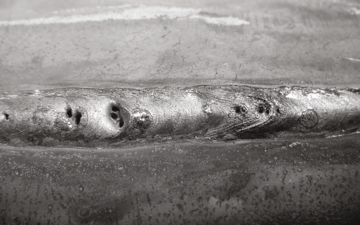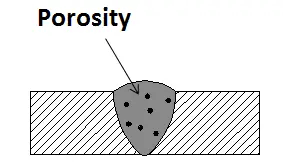Specialist Recommendations on What is Porosity in Welding and How to Resolve It
Specialist Recommendations on What is Porosity in Welding and How to Resolve It
Blog Article
Comprehending Porosity in Welding: Exploring Reasons, Results, and Prevention Techniques
As professionals in the welding sector are well mindful, recognizing the reasons, results, and prevention methods connected to porosity is important for attaining robust and trusted welds. By diving right into the root causes of porosity, examining its damaging impacts on weld high quality, and discovering reliable avoidance techniques, welders can improve their understanding and skills to create top quality welds consistently.
Common Sources Of Porosity
Contamination, in the type of dirt, oil, or corrosion on the welding surface area, creates gas pockets when heated up, leading to porosity in the weld. Inappropriate protecting happens when the shielding gas, commonly used in procedures like MIG and TIG welding, is incapable to completely secure the liquified weld pool from reacting with the surrounding air, resulting in gas entrapment and subsequent porosity. Additionally, poor gas coverage, commonly due to wrong circulation rates or nozzle positioning, can leave parts of the weld unprotected, enabling porosity to create.
Impacts on Weld Top Quality
The visibility of porosity in a weld can considerably jeopardize the general quality and honesty of the welded joint. Porosity within a weld develops spaces or cavities that damage the framework, making it more at risk to breaking, deterioration, and mechanical failing.
Moreover, porosity can hinder the performance of non-destructive screening (NDT) techniques, making it testing to discover various other defects or interruptions within the weld. This can bring about considerable safety worries, specifically in crucial applications where the structural stability of the welded elements is extremely important.

Avoidance Techniques Introduction
Given the detrimental influence of porosity on weld high quality, efficient prevention techniques are vital to maintaining the structural integrity of welded joints. Among the key prevention methods is extensive cleaning of the base materials before welding. Impurities such as oil, grease, corrosion, and dampness can add to porosity, so ensuring a tidy work surface area is essential. Appropriate storage of welding consumables in completely dry problems is additionally important to stop dampness absorption, which can cause gas entrapment throughout welding. Furthermore, selecting the appropriate welding parameters, such as voltage, existing, and take a trip rate, can aid decrease the danger of porosity development. Guaranteeing adequate shielding gas circulation and coverage is one more important prevention method, as not enough gas protection can lead to climatic contamination and porosity. Proper welder training and certification are crucial for executing precautionary steps properly and constantly. By integrating these avoidance techniques into welding methods, the event of porosity can be substantially minimized, leading to stronger and more dependable welded joints.
Importance of Correct Protecting
Proper securing in welding plays a vital duty in preventing atmospheric contamination and making sure the honesty of bonded joints. Shielding gases, such as argon, helium, or a mix of both, are generally used to secure the weld pool from responding with components in the air from this source like oxygen and nitrogen. When these responsive aspects enter into call with the hot weld pool, they can create porosity, bring about weak welds with minimized mechanical buildings.

Insufficient shielding can cause numerous problems like porosity, spatter, and oxidation, jeopardizing the architectural stability of the welded joint. Adhering to appropriate securing methods is vital to produce top notch welds with very little defects and make certain the longevity and dependability of the welded components.
Surveillance and Control Techniques
How can welders successfully monitor and regulate the welding procedure to make certain optimum results and protect against problems like porosity? One key approach is with the usage of advanced tracking modern technologies. These can consist of real-time surveillance systems that give feedback on parameters such as voltage, current, travel speed, and gas circulation prices. By continuously monitoring these variables, welders can identify inconsistencies from the optimal conditions and make prompt adjustments to avoid porosity development.

Additionally, implementing appropriate training programs for welders is necessary for keeping track of and regulating the welding process efficiently. What is Porosity. Informing welders on the importance of preserving constant criteria, such as proper gas shielding and take a trip speed, can help protect against porosity problems. Routine assessments and qualifications can additionally guarantee that welders excel in monitoring and about his managing welding procedures
Furthermore, making use of automated welding systems can improve surveillance and control capacities. These systems can precisely regulate welding parameters, reducing the possibility of human error and making certain constant weld quality. By combining sophisticated tracking modern technologies, training programs, and automated systems, welders can successfully check and manage the welding process to lessen porosity defects and accomplish high-quality welds.
Verdict

Report this page